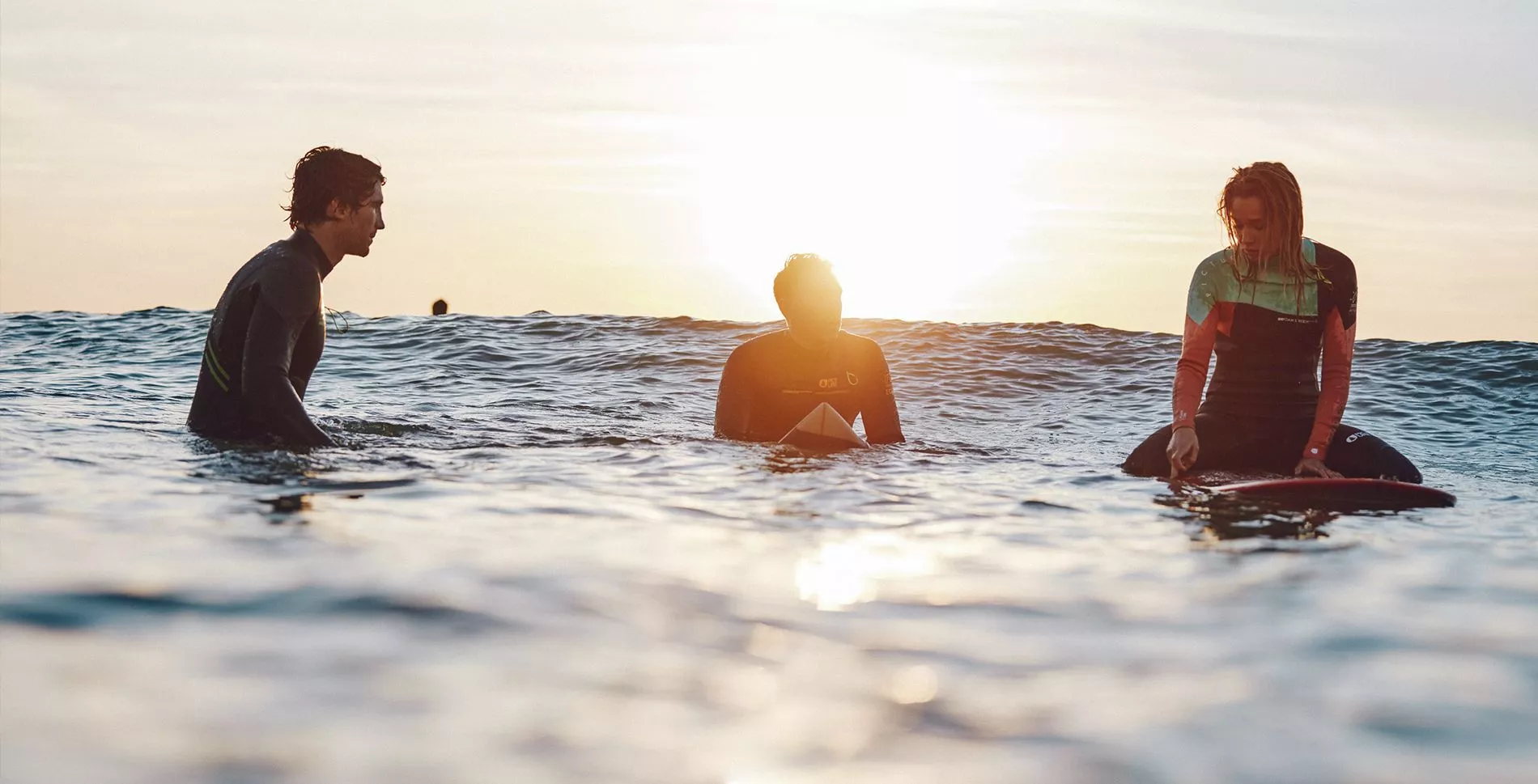Get 10% off and be the first
to discover new brands!
Neoprene, due to it being an oil derivative, is undoubtedly one of the most polluting materials in the practice of surfing. In this post, The Fair Cottage explores sustainable alternatives to traditional wetsuits, which leave a trail of pollution in their wake due to the high energy requirements of oil extraction and chemical processing and the problem of what to do with them at the end of their useful lives. However, if materials like neoprene are going to exist, the least we can do is get the most out of them as possible…
Eco-friendly wetsuits can be affordable, and they are a great investment for both surfers and the environment. By choosing a wetsuit made from sustainable materials, you can reduce your carbon footprint and support brands that prioritize sustainability. Don't let the misconception that eco-friendly options are expensive stop you from making a more conscious choice for your surfing gear.
Wetsuit Repair and Upcycling Solutions
At the Fair Cottage we really believe in exhausting the usefulness of materials. That’s why Neoprene upcycling programmes, like that of Patagonia , get us so pumped we are almost beyond the need for a second skin. Old wetsuits can be converted into all kinds of things, like beverage koozies, ipad or smartphone protectors, or better yet, a carry case for your fins.
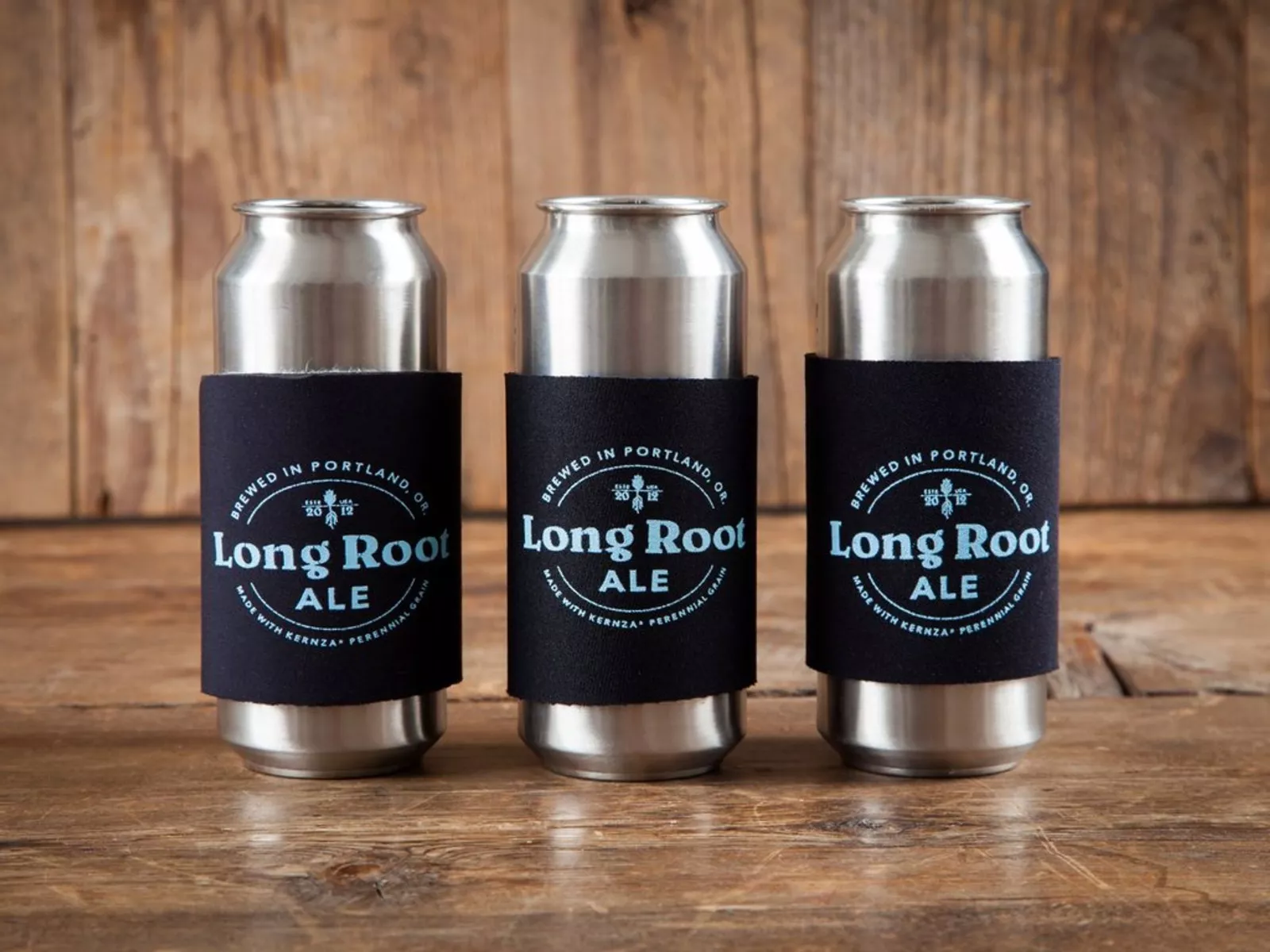
Patagonia is also helping to postpone the point at which wetsuits finally choke, with their warranty covered and paid-for wetsuit repairs, plus their mobile and cost free Worn Wear wetsuit repair programme.
Patagonia are doing a great job at extending the lives of existing neoprene wetsuits, reducing the overall need for virgin oil in wetsuit production. However, in this post our main focus is the neoprene-free wetsuits of the future, made from sustainable and ecological materials. We must use the present moment to promote these new technologies, through testing, discussion and conscious consumption, eventually banishing neoprene wetsuits to the past.
The Emergence Of Eco Wetsuits
Guru Pro Eco Wetsuits
A few years ago certain wetsuit manufacturers became interested in new, ecological materials. If you are reading this, you probably get why. There is something strangely paradoxical about coating ourselves in chemical and oil-based synthetics to enjoy a natural world that cannot break them down once they are thrown away. Therefore, new technologies, developed by like-minded, eco-conscious people began to emerge. Such as the implementation of bamboo fibres or recycled polyester through Sooruz’s GURU PRO technology.
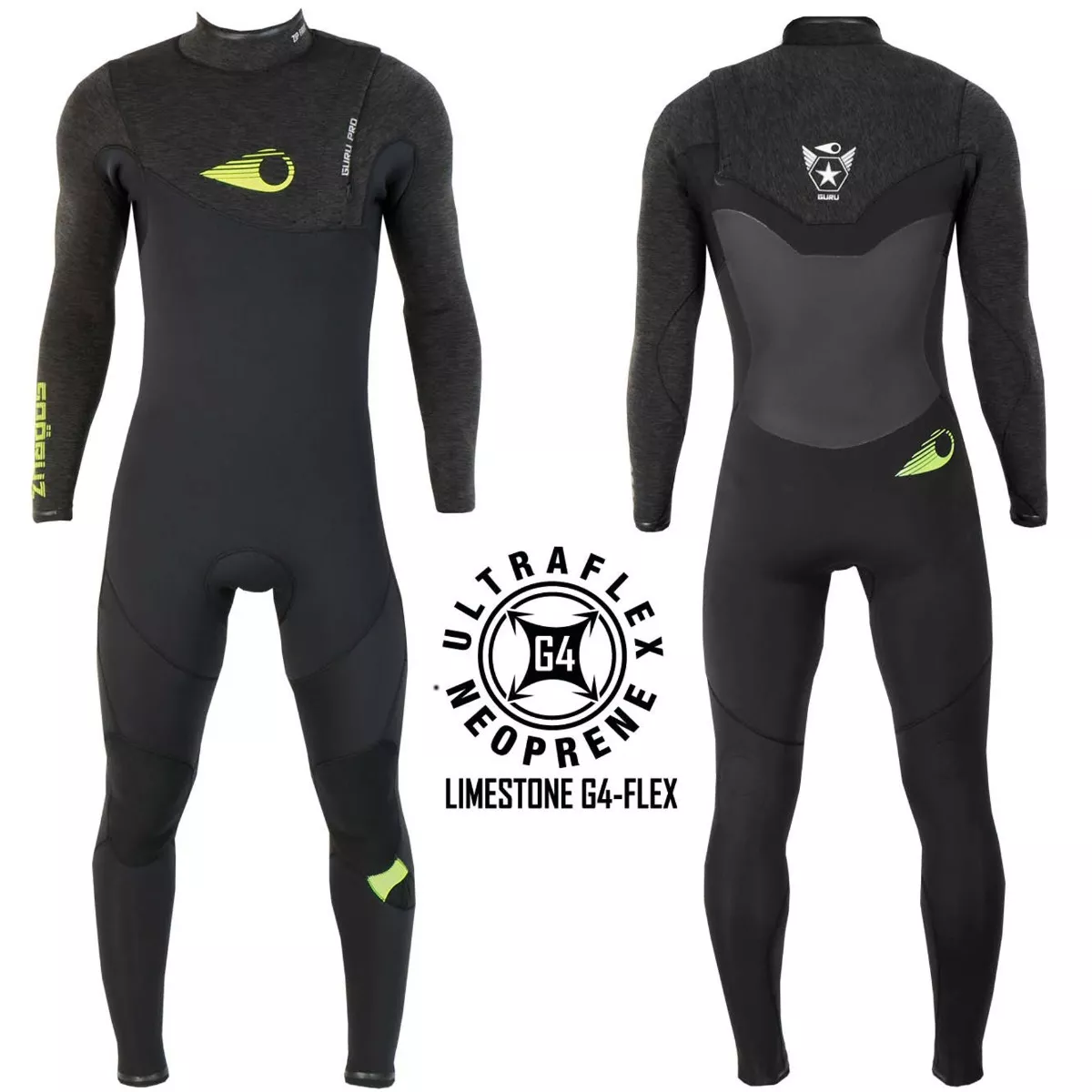
Geoprene Eco Wetsuits
Geoprene made from limestone, used in the wesuits of Matuse and by many other sustainable wetsuit manufacturers, was the material that Patagonia used in their earlier eco wetsuit models.
Geoprene was the first convincing technology to replace petroleum derivatives. Though, the difficulty in extracting limestone from mines, the high temperatures required to process the material in addition to it being a limited natural resource are the reasons why Patagonia detracted their attention from Geoprene, despite many years of development, eventually switching to Yulex and with that, transforming the market thanks to their influence.
Yulex Eco Wetsuits
Yulex natural rubber was developed as a totally organic alternative to neoprene, extracted from a plant called guayule that can be cultivated quickly, cheaply and with relative ease. Patagonia are now mixing merino wool and recycled polyester with the oil free guayule plant based fibres for all their suits, helping to make Yulex technology one of the most popular eco alternatives around.
The combination of Yulex and natural glue and water paints allows for wetsuit production that considerably reduces the damage to our planet. Imagine if all wetsuits were made in this way, with factories buying no more oil and reducing pollutive chemical and carbon emissions. At The Fair Cottage we want to realise this dream. To see the economy closing loops and producing in smarter and more sustainable ways. Not just for wetsuits, but for everything we buy and use.
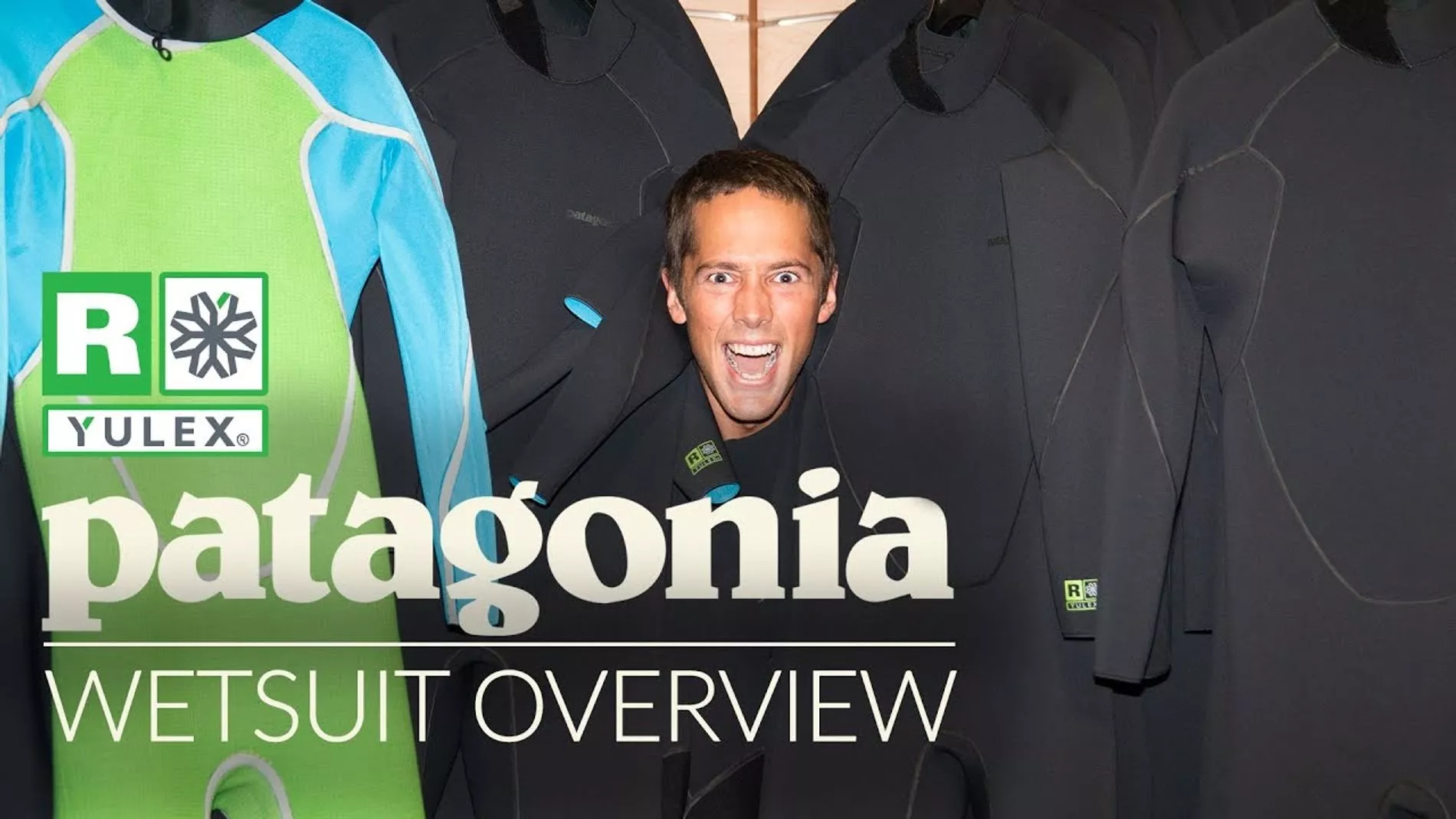
Naturalprene Eco Wetsuits
Naturalprene is another innovative new material being used by Vissla, in their Eco Seas wetsuit range as well as Sooruz and Picture Organic, as part of their bio-sourced range of wetsuits. The latter of which is one of our favourite brands right now, due to its rapid growth, on-trend designs and success in connecting people with pioneering, eco-friendly technology. Picture Organic have been awarded at ISPO, one of the most important Outdoor fairs in the world, for their innovative products. We highly recommend checking out their vibrant yet technically adept range of products.
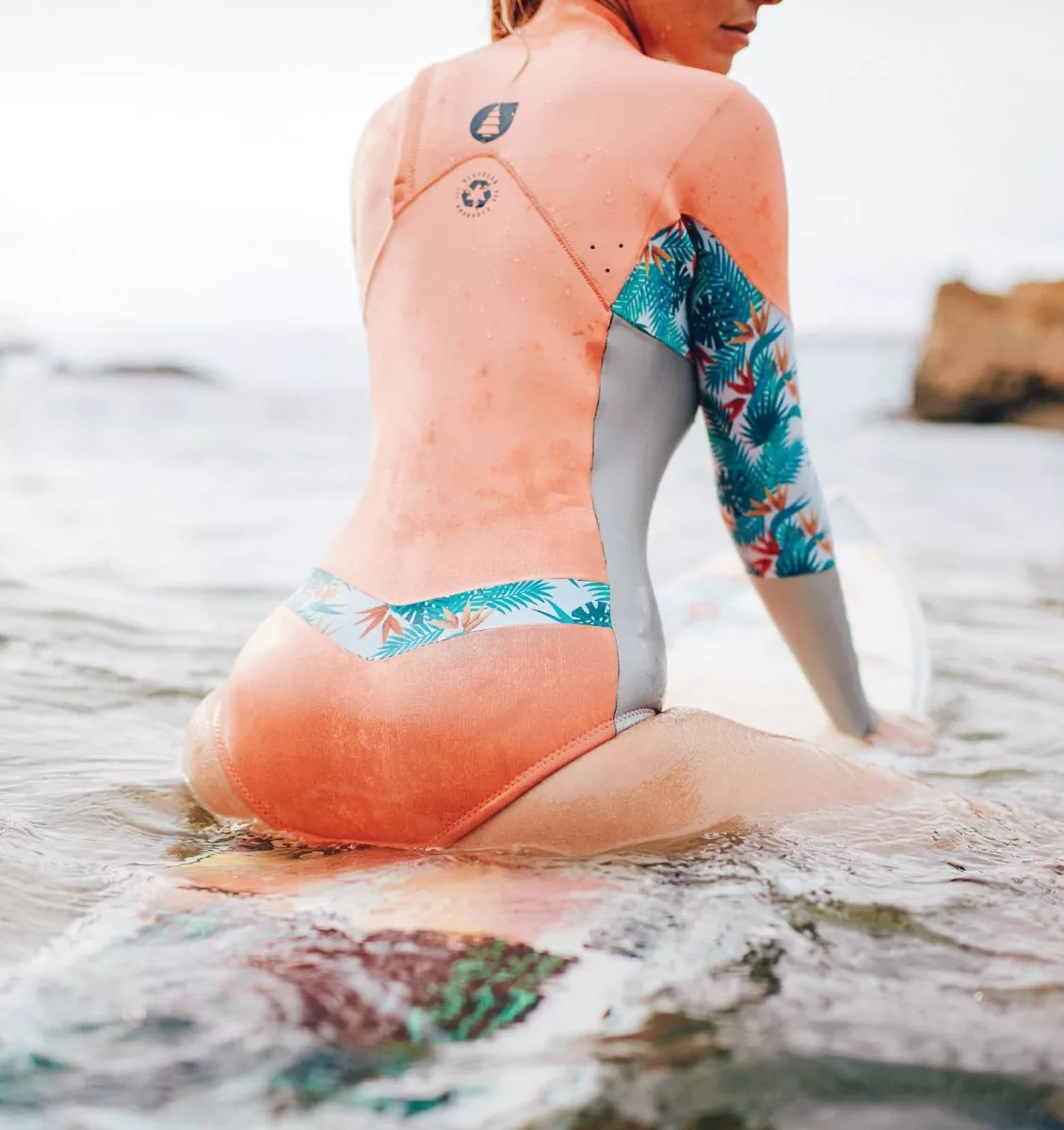
The Importance Of Transparency
It is important to point out that all raw material extraction is supervised and valued by the brands we have mentioned. At Patagonia, for example, they carefully chose from where to purchase natural rubber, the extraction of which can lead to deforestation and labour exploitation in certain countries. Transparency is paramount, hence their relationship with one of the few FSC certified hevea plantations, located in Guatemala. The hevea trees' resin is the biological basis for manufacturing natural rubber. Patagonia get 85% of the total rubber required to make an eco wetsuit from this one plantation.
Sustainable Wetsuit Performance Vs Neoprene Wetsuits
The really interesting thing about the materials we have mentioned is that they generally perform better than oil derived fabrics, providing greater elasticity, durability and impermeability. They weigh less, fit better, and retain more body heat. They even smell better than conventional wetsuits!
The truth is that alternative wetsuits are superior to their conventional rivals, and the data is there to back it up (well, except for the smell part). In the future our online shop will be a window of transparency for this information, helping our readers and customers to make informed choices that are aligned with their values.
The Future Of Eco Wetsuits
The Fair Cottage is here to help bridge the information gap. We will provide consumers not only with information on the origins of products, but a range of performance factors, such as permeability, comfort and just as importantly (but sometimes overlooked), durability. The more stress and strain a product can take, the less often it will need to be replaced.
Recycled polyester for zippers, wool for coating, water based paints and glues instead of solvents, limestone, gum extracted from trees in sustainable and certified plantations, plus the emergence of green surfboards, they all represent the infancy in a growing trend towards sustainable, long-lasting design. A revolution of thought, putting nature at the heart of the design process, preserving resources instead of exploiting them and innovating solutions to the problem of mass pollution.
Of course, as with any revolution, the greater the number of people involved, the greater impact the uprising has. The more individuals who demand ecological products made from sustainable materials, the more prevalent they will become. Until, eventually, they are as ubiquitous and fairly priced as their polluting pre-revolutionary ancestors once were.
At The Fair Cottage we are excited to dive more deeply into the seas of sustainability and we invite our conscious readers to join us on our journey, helping us to explore the exciting things that are happening with sustainable outdoor clothing and gear and smart material development. Because information is transparency. Only with transparency can we move towards a sustainable economy.
If you would like to join our conscious network and contribute towards change, please sign up to our mailing list.


